
Roger Hart's Degrees of Participation; participation begins at rungs 4... Download Scientific
Dr. Roger Hart (co-director of the Children's Environments Research Group) created a "ladder" of participation to help us think about where we really are and where we'd like to be in terms of children's participation in our programs.
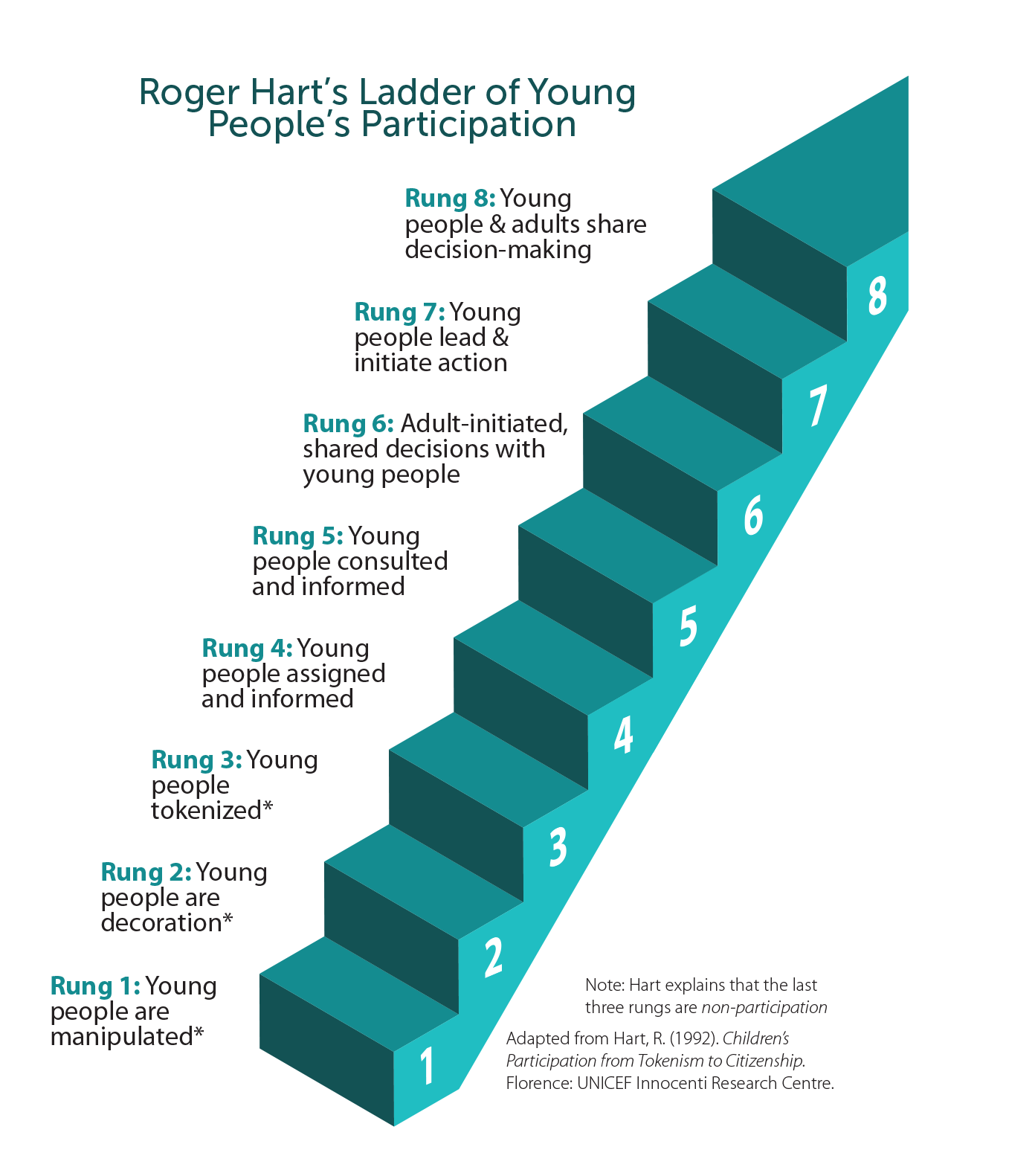
What we learned from piloting a youthled labor market assessment in Uganda IREX
Roger Hart's Ladder of Participation shows young people-initiated, shared decisions with adults as the top form of young people's participation, followed immediately by young people-initiated and directed. This is somewhat controversial an issue for many people working with and around young people.

Roger Hart's ladder of participation
Roger Hart's Ladder of Participation Roger Hart's Ladder of Participation presents eight levels of youth participation that start from manipulation and tokenism at the lower rungs, to full participation at the top.. It is important to note that the ladder metaphor of the model should not be assumed to mean that higher levels of participation are always better in all contexts and for all.

Ladder of Participation (Hart, 1994) Download Scientific Diagram
The ladder probably drew so much attention because when it was first published in Children's Participation: From Tokenism to Citizenship by UNICEF in 1992, there was very little written of a conceptual nature on the theme of children's participation in their programmes, projects, or organisations.

Hart’s Ladder of Participation
Ladder of participation Throughout the participation agenda, Roger Hart's 'Ladder of Participation' is often used to explain the different approaches and practices that organisations take.
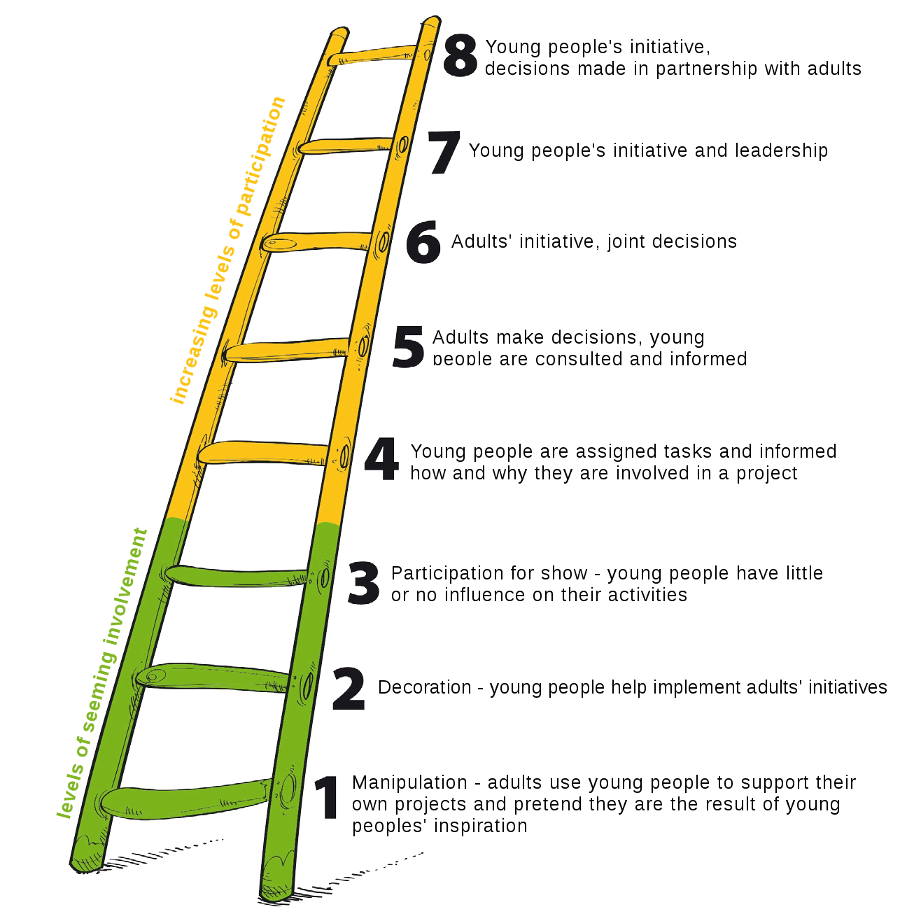
Youth participation theory and practise in Poland
Roger Hart's ladder of children's participation is adapted from Sherry Arnstein's "ladder of citizen participation" (1969) which related to citizen involvement in planning processes in the United States. Hart's model (1992) has eight rungs and two main zones he calls 'Non-Participation' and 'Degrees of Participation'.

Hart's Ladder of Young People's Participation Download Scientific Diagram
Abstract. A nation is democratic to the extent that its citizens are involved, particularly at the community level. The confidence and competence to be involved must be gradually acquired through practice. It is for this reason that there should be gradually increasing opportunities for children to participate in any aspiring democracy, and.
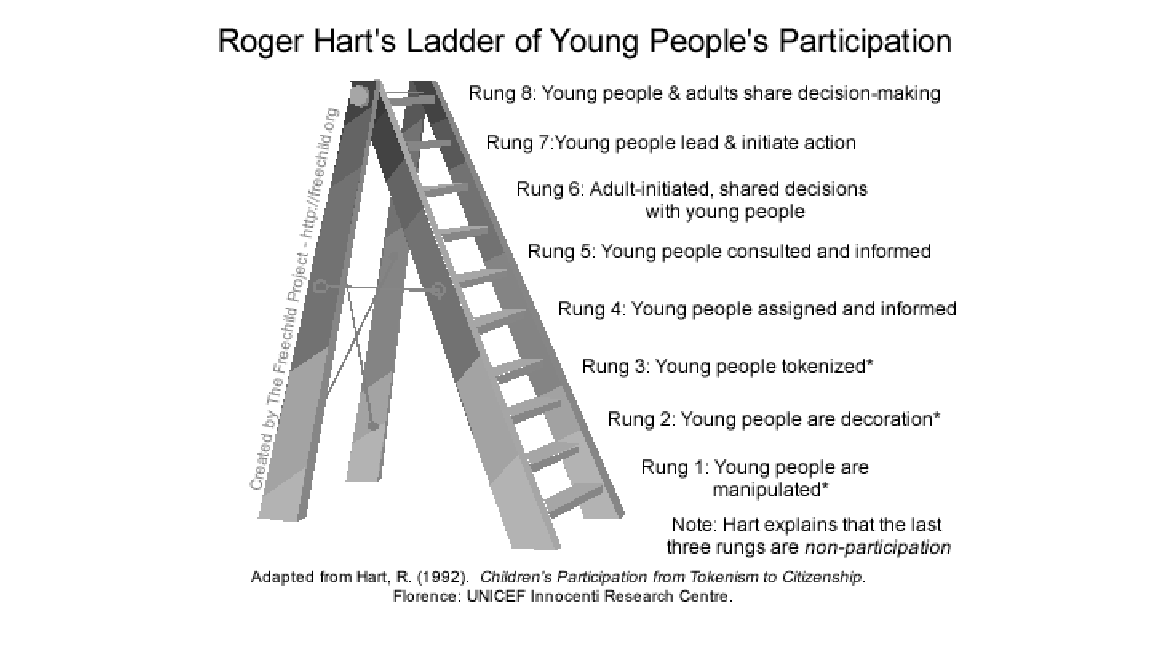
Roger Hart's Ladder of Young People's Participation Civics & Citizenship
The eight rungs of Hart's Ladder of Children's Participation are: 1. Manipulation Participation as manipulation occurs when children and youth do not understand the issues motivating a participatory process or their role in that process. In Hart's words: "Sometimes adults feel that the end justifies the means….

The Ladder of Participation according to Roger A. Hart (1992). Source... Download Scientific
Monday, March 7, 2016 Document type: Fact sheet Subject area: Schooling ladder_of_participation.pdf An explanation of Roger Harts' ladder of young people's participation. Page last updated: 8 Nov 2022
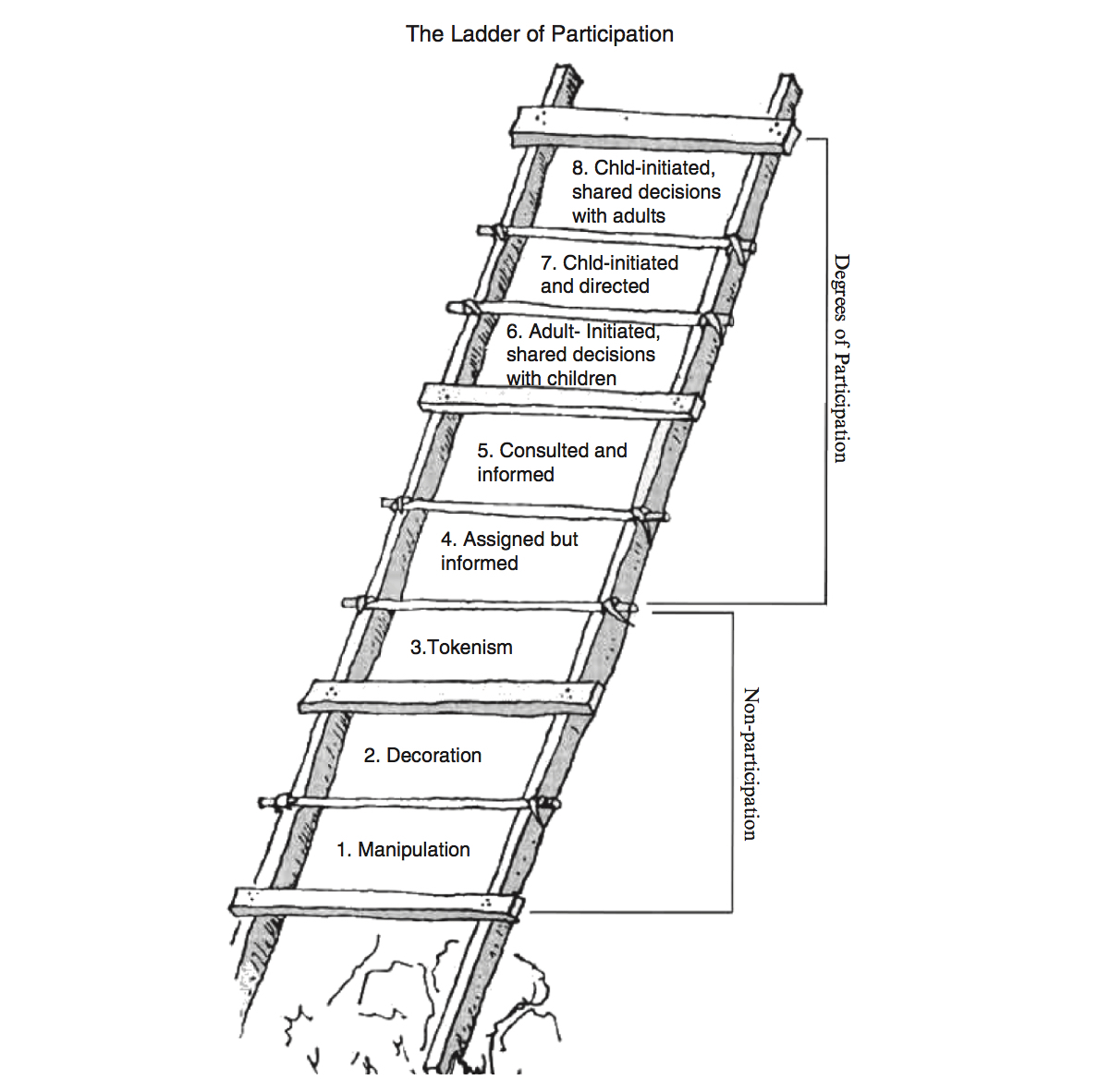
Ladder of Children's Participation Organizing Engagement
ROGER HART'S LADDER OF PARTICIPATION initiated shared decisions with adults: Youth-led activities, in decision making is shared between youth and adults working as partners. initiated and directed: Youth-led activities with little input from initiated shared decisions with youth: Adult-led activities, in decision making is shared with youth.

Ladder of Participation (Hart, 1994) Download Scientific Diagram
Download scientific diagram | Ladder of Participation (Roger Hart, 1992) from publication: Children's Participation in Development for School Health | This paper presents a rationale for children.
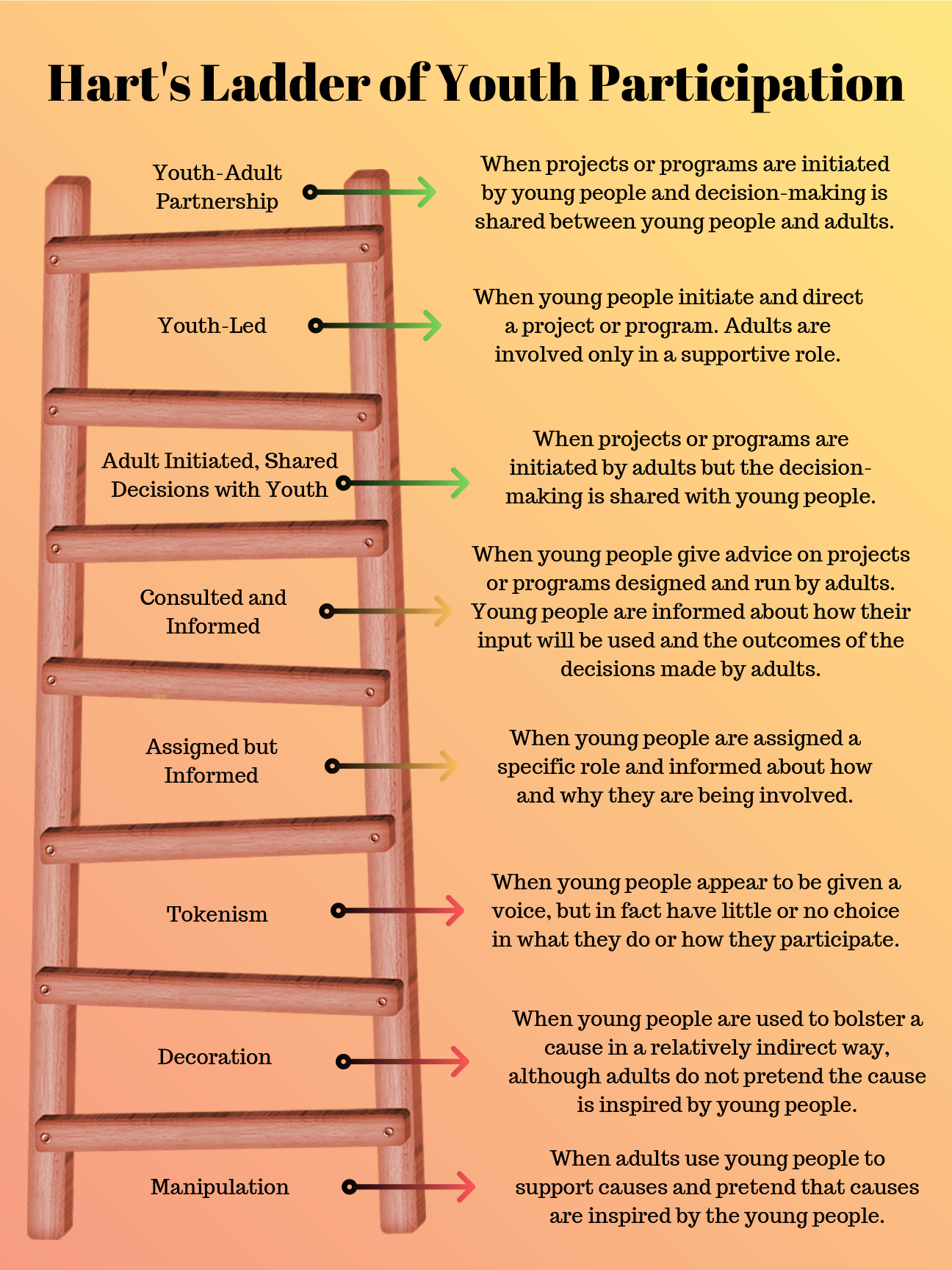
Things to Remember when Getting Involved
Hart's ladder of participation has been the most influential model in this field. This paper offers an alternative model, based on five levels of participation: 1. Children are listened.

Ladder of children's participation (Hart, 1997) Download Scientific Diagram
The model also influenced many later models, including Elizabeth Rocha's Ladder of Empowerment and Roger Hart's Ladder of Children's Participation. Arnstein's penetrating, no-nonsense, even pugnacious analysis advanced a central argument that remains as relevant today as it was in 1969: citizen participation in democratic processes, if.

Hart's Ladder of Participation. Download Scientific Diagram
The Levels of Child Participation were adapted from Hart, Roger A., Children's Participation: From Tokenism to Citizenship, UNICEF: Florence (1992).
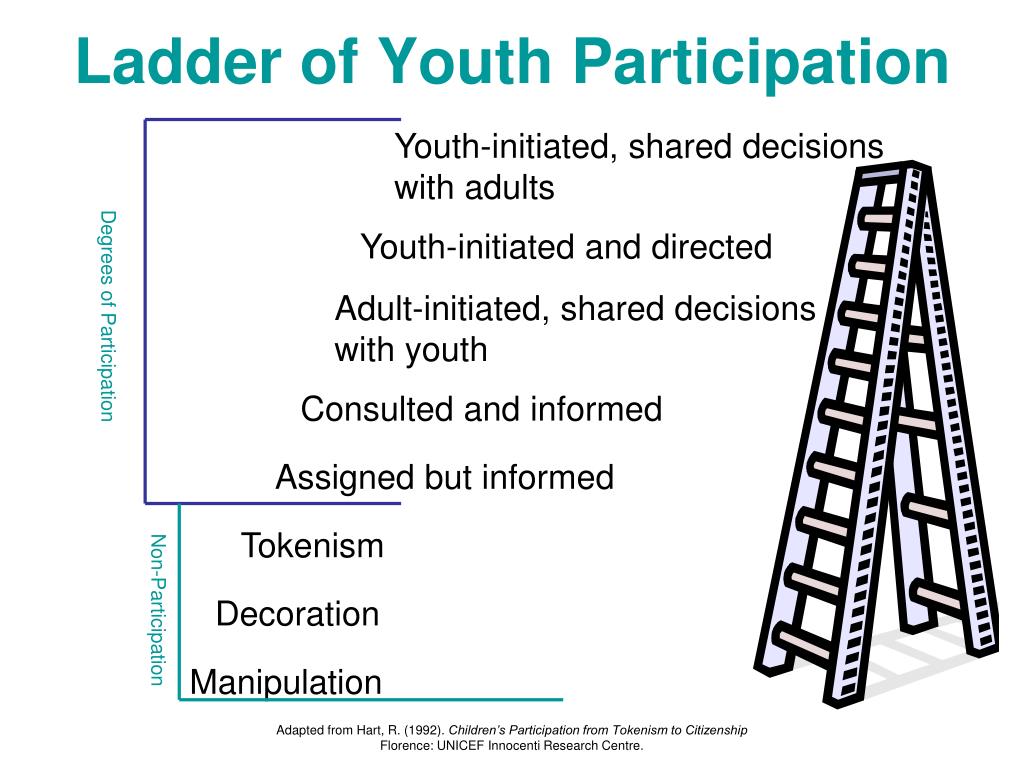
PPT Ladder of Youth Participation PowerPoint Presentation, free download ID774048
The term 'participation' is used in this Essay to refer generally to the process of sharing decisions which affect one's life and the life of the community in which one lives. It is the means by which a democracy is built and it is a stan-dard against which democracies should be measured. Participation is the fundamental right of citizenship.

ROGER HART'S LADDER OF YOUNG PEOPLE'S PARTICIPATION Download Scientific Diagram
A comprehensive overview of Roger Hart's ladder of participation, the PEERiN FAMiLY foundation, and the Youth Engagement Continuum. Understanding the Continuum. Levels of Participation. Explore the different levels of participation on the Continuum and what they entail.